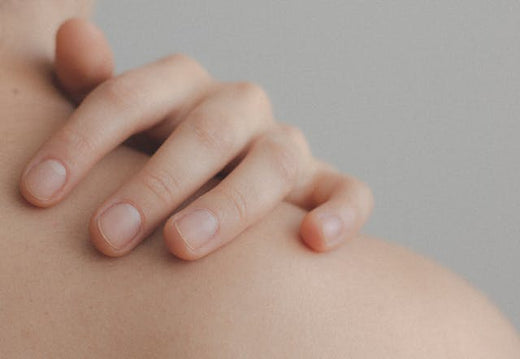How to spot early signs of skin cancer with simple skin checks
Find out moreWhy should you check your skin for signs of cancer?
Malignant melanoma – the deadliest form of skin cancer – is the 5th most common cancer in the UK, with around 15,400 people diagnosed each year. 51% of melanoma skin cancer cases are in males (2% of all male cancer deaths), and 49% are in females (1% of all female cancer deaths). While these statistics may be alarming, evidence shows that 86% of skin cancers can be prevented and there is a 98% survival rate if caught early versus 16% if caught late.
There is currently no NHS national screening programme for skin cancer so it’s important to regularly check your skin for any changes or abnormalities. Being familiar with your skin – i.e. how it looks and feels – is crucial in identifying the symptoms of skin cancer early.
A complete self-skin examination takes less than five minutes, and we recommend you check your skin once a month.
What should you look out for?
If you see something NEW, CHANGING or UNUSUAL it could be early signs of skin cancer. This includes:
- Changes in the size, shape and colour of a mole, or bleeding, oozing or inflammation – particularly in moles that are over 6mm in diameter
- A growth that increases in size and appears pearly, transparent, tan, brown, black, or multicoloured
- A spot or sore that continues to itch, hurt, crust, scab or bleed
- An open sore that does not heal within three weeks
What you’ll need
- A full-length mirror
- A hand mirror
- Good lighting
How to perform a self-skin examination
Step 1 – Face, neck and scalp
- Use a hand mirror to carefully check your face and neck, especially your nose, lips, mouth and ears — front and back
- Thoroughly inspect your scalp, using a blow-dryer and mirror to expose each section
Step 2 – Arms and hands
- Check your arms, then raise them one at a time, checking your underarms and forearms
- When examining your hands, look at palms, fingernails (without nail varnish) and between your fingers
Step 3 – Torso
- Focus on your neck, chest and torso. Women should check underneath their breasts
- Check the rest of your abdomen
Step 3 – Legs, feet and genitals
- Sit down and look at the front of your thighs, your knees and your shins
- Use your hand mirror to look at the backs of your legs, thighs and calves
- Examine the tops and soles of your feet, checking between the toes and your toenails (without nail varnish)
- Inspect your genital area
Step 4 – Back and shoulders
- Standing up, examine your back, shoulders and buttocks in a full-length mirror with the aid of a hand mirror
Handy hint
During your examination, we recommend that:
- MEN should pay particular attention to their trunk
- WOMEN should carefully check their legs
These are the most common areas for men and women to develop melanomas – the most dangerous form of skin cancer – as shown in the illustration below.

If you are concerned about any moles or lesions after your self-examination consult your GP immediately. Check4Cancer offers Skin Cancer Screening & Mole Check – a private skin cancer screening service for anyone who wants a specialist review of the appearance of their skin or moles. You can find out more about Skin Cancer Screening & Mole Check service or you can download our brochure on Skin Health for more information on how to prevent and detect skin cancer.
References
https://www.royalmarsden.nhs.uk/information-gps/gp-resources/skin-cancer/skin-cancer-incidence-and-risk-factors

Mr Per Hall
Clinical Advisor for Skin Cancer
Consultant Plastic Surgeon, Cambridge. Mr Per Hall has been a consultant plastic surgeon in Cambridge since 1995. He has been a pioneer in the early detection of skin cancer using computer imaging for over 20 years. Mr Hall and his team have had a major input in the development of SIAscopy, producing the most clinical papers on the subject. He continues to collaborate in studies aiming to help identify suspicious skin lesions at the earliest opportunity and continues to work with computer scientists on ways to improve diagnosis including the use of artificial intelligence. Mr Hall is also committed to the reconstructive surgical needs of children in developing countries and regularly trains surgeons in cleft lip and palate surgery in Ethiopia to facilitate this. Mr Hall oversees the SkinCheck service.
Find out moreKnowledge and support
Go to all articles
Cancer Screening vs Diagnosis: What’s the Difference and Why It Matters
When it comes to detecting cancer, the words screening and diagnosis are often used interchangeably. But they mean very different...
Read more

Take Control of Your Health with Home Testing
Private, accurate and expert-led home cancer checks for men. Find out how Check4Cancer makes proactive health convenient and clinically trusted.
Read more
